Estimating phase error using a Hilbert transform-based time-domain technique
Measuring phase noise in oscillators is crucial in communication systems, vibration analysis, and frequency synthesizers. Traditionally, this measurement is done in frequency domain by estimating the ratio of the power density at an offset frequency from the carrier to the power of the carrier signal. This approach is hardware intensive and dependent on the the offset frequency, for which there exists no standard. Here, we propose an alternative method to quantify phase noise but in the time domain in the form of a root-mean-square true phase angle deviation. This is done using a self-created
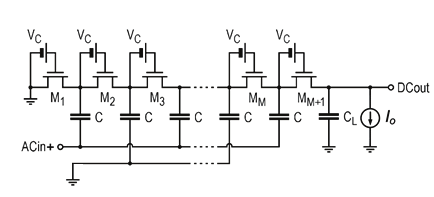
A mathematical model of an ideally threshold compensated rectifier for RF energy harvesting
This paper introduces a mathematical model of an ideally threshold compensated rectifier for RF energy harvesting. The ideally compensation arrangement has been exploited to improve the rectifier's performance and overcome the limitation of rectifier's sensitivity which mainly depends on the threshold voltage of the rectifying devices (transistors). The model considers the conduction angle and the reverse current in deriving closed form analytical expressions for output dc voltage and efficiency. Using a 65-nm low leakage CMOS process with low-threshold transistors, 900-MHz multi-stages
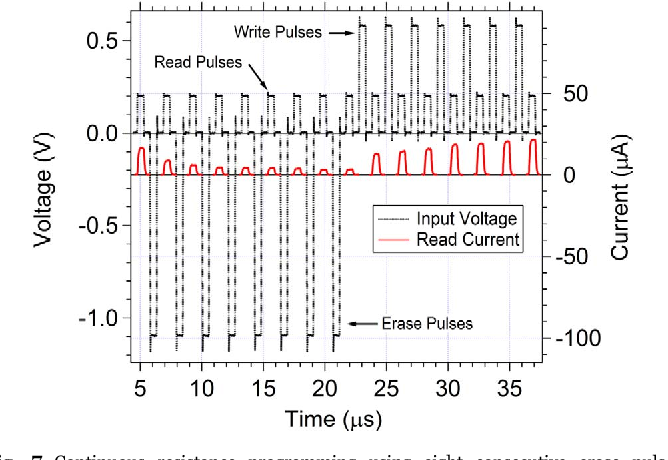
Empirical Temperature Model of Self-Directed Channel Memristor
Memristors are used in many innovative research areas. However, the temperature has a strong effect on mem-ristance, which results in malfunctions. Although commercial a memristor is available, its thermal characteristics are still under-explored. This paper presents a temperature model of a self-directed channel memristor. The experimental results of measuring high-resistive-state memristance between 253K and 383K show the inverse relation, which can be described by an exponential equation. This relation is similar to metal-oxide memristors; therefore, our model is expected to cover many
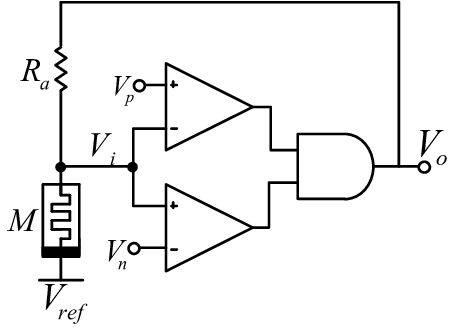
Effect of boundary on controlled memristor-based oscillator
Recently, the applications of memristors have spread into many fields and especially in the circuit theory. Many models have been proposed for the HP-memristor based on the window functions. In this paper, we introduce a complete mathematical analysis of the controlled reactance-less oscillator for two different window functions of Joglekar's model (linear and nonlinear dopant drift) to discuss the effect of changing the window function on the oscillator's behavior. The generalized necessary and sufficient conditions based on the circuit elements and control voltages for both the linear and
Power dissipation of memristor-based relaxation oscillators
Recently, many reactance-less memristive relaxation oscillators were introduced, where the charging and discharging processes depend on memristors. In this paper, we investigate the power dissipation in different memristor based relaxation oscillators. General expressions for these memristive circuits as well as the power dissipation formulas for three different topologies are derived analytically. In addition, general expressions for the maximum and minimum power dissipation are calculated. Finally, the calculated expressions are verified using PSPICE simulations showing very good matching.
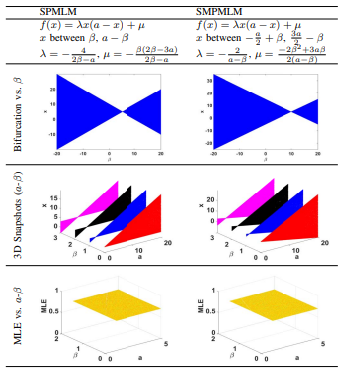
Speech encryption using generalized modified chaotic logistic and tent maps
This paper presents a speech encryption application, which utilizes several proposed generalized modified discrete chaotic maps based on the logistic and tent maps for pseudo-random number generation. The generalization scales the output range and the key space. The modification controls the bounds on the output range through a parameter such that chaotic output exists for almost all values of the parameter. Consequently, the modified maps do not suffer from the inherited problems of conventional chaotic generators such as islands of stability and drifting from chaos due to dynamical
Conical and cylindrical metallic nanoparticles design for plasmonic photovoltaics enhancement
Plasmonic Photovoltaics are considered as a promising candidate for enhancing the optical absorption by embedding metallic nanoparticles that confine the incident light in the cell. This results in thin-film PVs with improved efficiency. In this paper, the effects of embedding both conical and cylindrical metal nanoparticles in plasmonic PVs are investigated. The extinction cross sections for these designs are calculated. The improvement of the optical absorption of the solar cell due to these nanoparticles is proved and compared. Finally, the effects of the design parameters of these

Two-port two impedances fractional order oscillators
This paper presents a study for general fractional order oscillator based on two port network where two topologies of oscillator structure with two impedances are discussed. The two impedances are chosen to be fractional elements which give four combinations for each topology. The general oscillation frequency, condition and the phase difference between the two oscillatory outputs are deduced in terms of the transmission matrix parameter of a general two port network. As a case study: two different networks are presented which are op-amp based circuit and non-ideal gyrator circuit. The
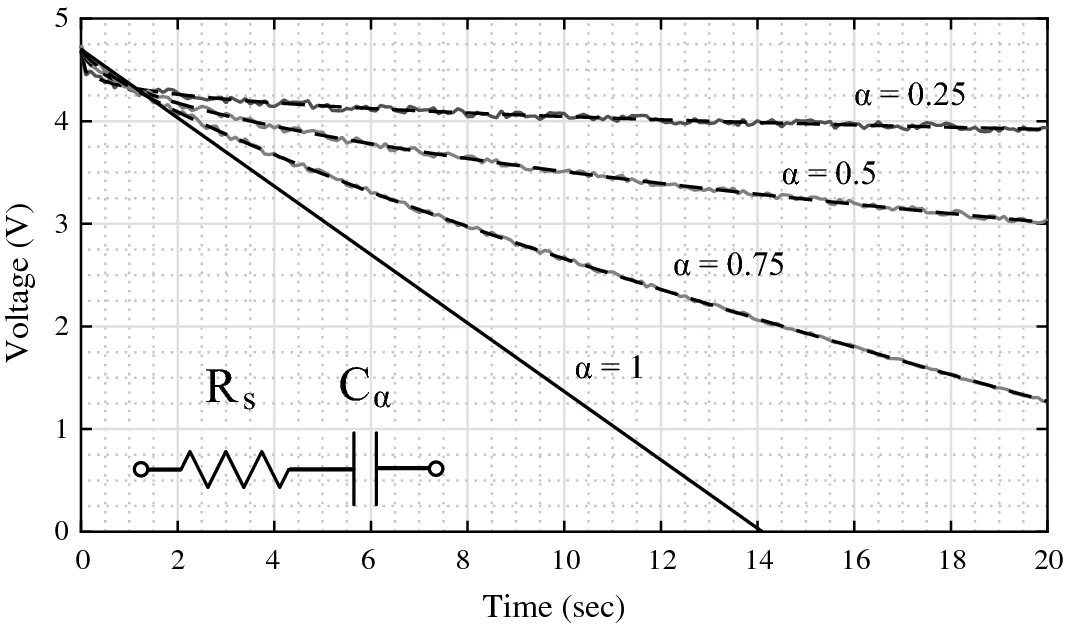
Rates and Effects of Local Minima on Fractional-Order Circuit Model Parameters Extracted from Supercapacitor Discharging Using Least Squares Optimization
Optimization routines are widely used to numerically determine a set of model parameters that best fit collected experimental data. One recent application of these methods is to extract the fractional-order circuit model parameters that accurately characterize the transient behavior of discharging supercapacitors. However, the variability that these methods introduce to the extracted model parameters must be understood to determine if changes in model parameters are artifacts of the optimization routine or are representative of physical changes in the device under study. In this work, the
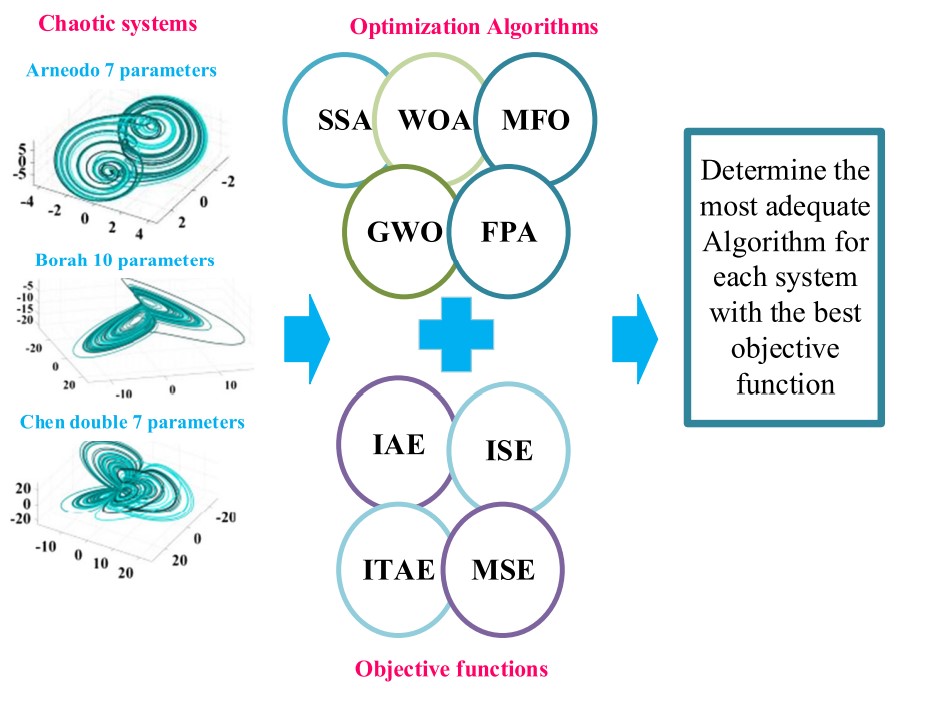
Parameter identification of fractional-order chaotic systems using different Meta-heuristic Optimization Algorithms
Fractional-order chaotic systems (FOCS) parameter identification is an essential issue in chaos control and synchronization process. In this paper, different recent Meta-heuristic Optimization Algorithms are used to estimate the parameters and orders of three FOCS. The investigated systems are Arneodo, Borah rotational attractor and Chen double- and four-wing systems. The employed algorithms are the Salp Swarm Algorithm, Whale Optimization Algorithm, Moth-Flame Optimizer, Grey Wolf Optimizer and the Flower Pollination Algorithm (FPA). The proposed algorithms are applied on several objective
Pagination
- Previous page ‹‹
- Page 38
- Next page ››
